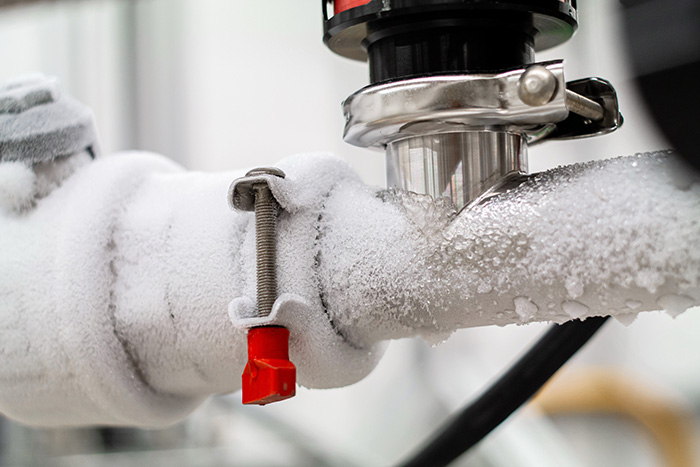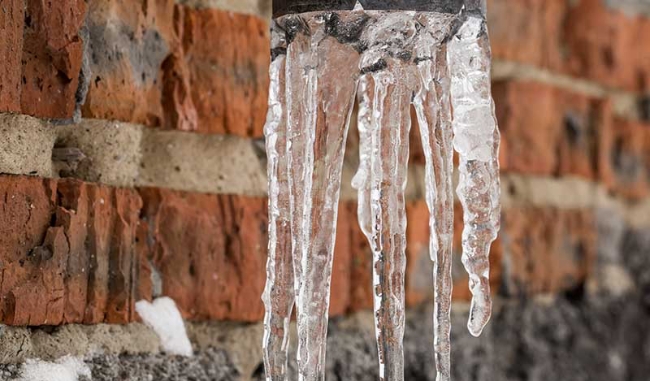Critical Approaches for Preventing Frozen Pipes in Winter
Critical Approaches for Preventing Frozen Pipes in Winter
Blog Article
Have you been in search of content about Prevent Frozen Pipes ?

Winter can wreak havoc on your pipes, especially by freezing pipes. Here's just how to avoid it from taking place and what to do if it does.
Intro
As temperature levels decrease, the danger of frozen pipes increases, potentially causing expensive repair services and water damages. Recognizing exactly how to prevent frozen pipelines is crucial for homeowners in cold climates.
Prevention Tips
Insulating vulnerable pipelines
Cover pipelines in insulation sleeves or use warmth tape to safeguard them from freezing temperature levels. Focus on pipelines in unheated or external locations of the home.
Home heating techniques
Maintain indoor spaces appropriately heated, particularly locations with pipes. Open cabinet doors to allow warm air to flow around pipelines under sinks.
Exactly how to determine icy pipelines
Search for reduced water flow from faucets, unusual odors or noises from pipes, and noticeable frost on revealed pipelines.
Long-Term Solutions
Architectural adjustments
Think about rerouting pipelines far from outside wall surfaces or unheated locations. Include additional insulation to attics, basements, and crawl spaces.
Updating insulation
Buy top quality insulation for pipes, attics, and wall surfaces. Appropriate insulation assists maintain regular temperature levels and decreases the risk of icy pipes.
Shielding Outside Plumbing
Yard hose pipes and exterior faucets
Disconnect and drain pipes garden pipes before winter season. Mount frost-proof spigots or cover exterior faucets with protected caps.
Understanding Frozen Pipelines
What causes pipes to ice up?
Pipelines ice up when exposed to temperatures listed below 32 ° F (0 ° C) for expanded periods. As water inside the pipes freezes, it increases, taxing the pipe walls and potentially triggering them to rupture.
Threats and problems
Icy pipelines can lead to water system disturbances, home damages, and costly repair services. Ruptured pipelines can flood homes and trigger considerable structural damages.
Indications of Frozen Piping
Recognizing icy pipelines early can prevent them from bursting.
What to Do If Your Pipelines Freeze
Immediate activities to take
If you believe icy pipes, maintain taps available to alleviate stress as the ice thaws. Use a hairdryer or towels taken in hot water to thaw pipelines slowly.
Final thought
Preventing icy pipes calls for proactive actions and quick feedbacks. By comprehending the causes, indicators, and preventive measures, home owners can safeguard their pipes during cold weather.
5 Ways to Prevent Frozen Pipes
Drain Outdoor Faucets and Disconnect Hoses
First, close the shut-off valve that controls the flow of water in the pipe to your outdoor faucet. Then, head outside to disconnect and drain your hose and open the outdoor faucet to allow the water to completely drain out of the line. Turn off the faucet when done. Finally, head back to the shut-off valve and drain the remaining water inside the pipe into a bucket or container. Additionally, if you have a home irrigation system, you should consider hiring an expert to clear the system of water each year.
Insulate Pipes
One of the best and most cost-effective methods for preventing frozen water pipes is to wrap your pipes with insulation. This is especially important for areas in your home that aren’t exposed to heat, such as an attic. We suggest using foam sleeves, which can typically be found at your local hardware store.
Keep Heat Running at 65
Your pipes are located inside your walls, and the temperature there is much colder than the rest of the house. To prevent your pipes from freezing, The Insurance Information Institute suggests that you keep your home heated to at least 65 degrees, even when traveling. You may want to invest in smart devices that can keep an eye on the temperature in your home while you’re away.
Leave Water Dripping
Moving water — even a small trickle — can prevent ice from forming inside your pipes. When freezing temps are imminent, start a drip of water from all faucets that serve exposed pipes. Leaving a few faucets running will also help relieve pressure inside the pipes and help prevent a rupture if the water inside freezes.
Open Cupboard Doors
Warm your kitchen and bathroom pipes by opening cupboards and vanities. You should also leave your interior doors ajar to help warm air circulate evenly throughout your home.

I'm very inquisitive about How to Prevent Your Pipes From Freezing and I am assuming you enjoyed our blog post. Be sure to take the time to promote this blog posting if you appreciated it. We thank you for your readership.
Give Me A Quote! Report this page